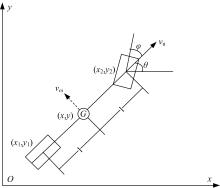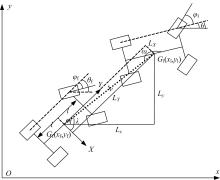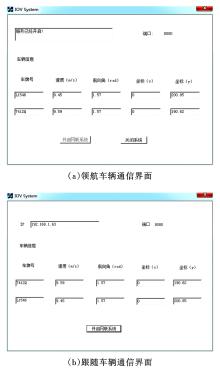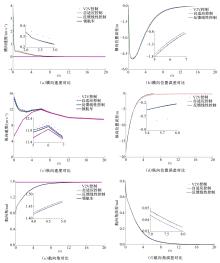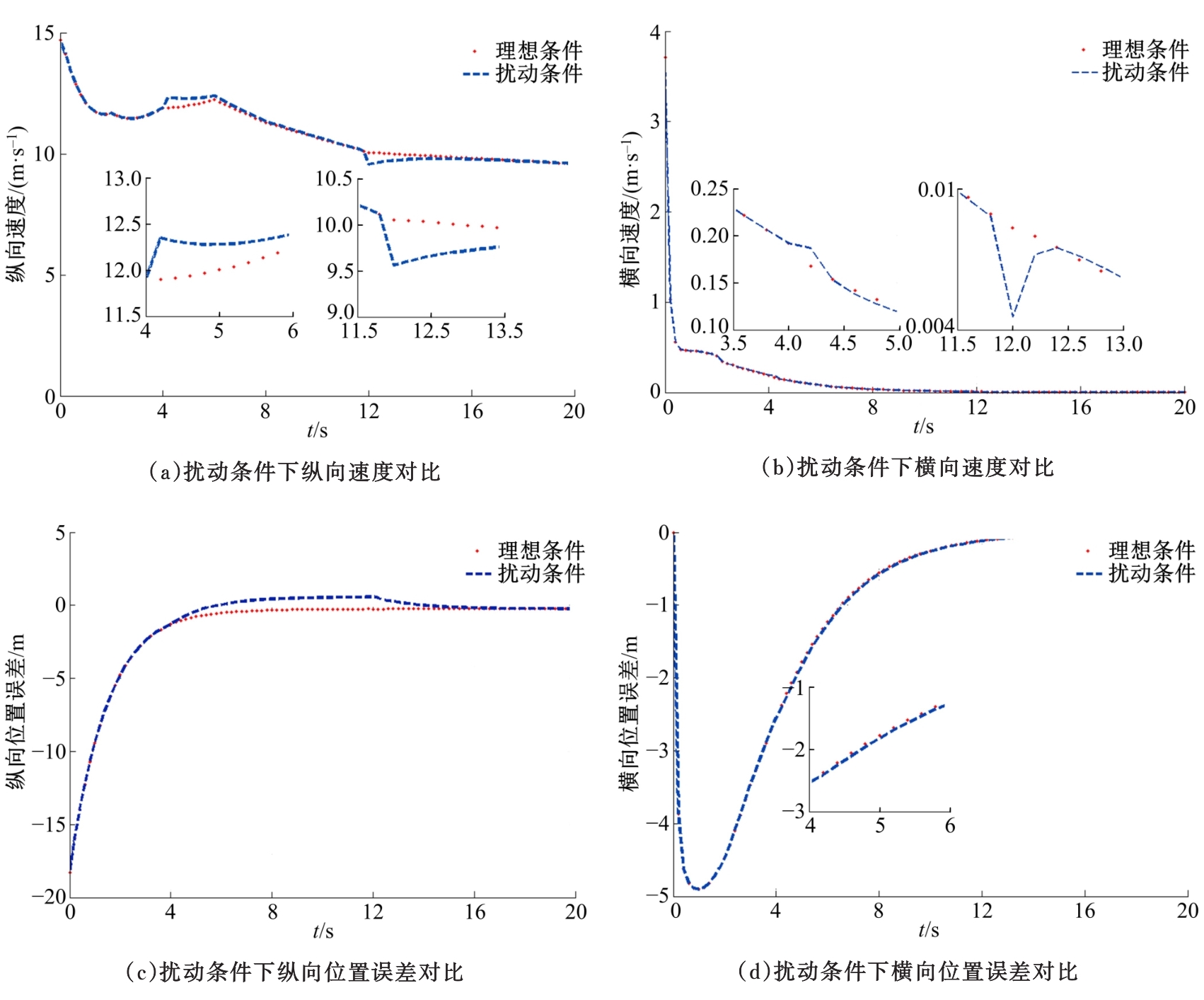Journal of Jilin University(Engineering and Technology Edition) ›› 2020, Vol. 50 ›› Issue (2): 711-718.doi: 10.13229/j.cnki.jdxbgxb20181143
Method of vehicle formation control based on vehicle to vehicle communication
Yan MA1,2( ),Jian-fei HUANG1,Hai-yan ZHAO1,2(
),Jian-fei HUANG1,Hai-yan ZHAO1,2( )
)
- 1.College of Communication Engineering,Jilin University,Changchun 130022,China
2.Key Laboratory of Automotive Simulation and Control,Jilin University,Changchun 130022,China
CLC Number:
- TP273
| 1 | 任开明, 李纪舟, 刘玲艳, 等. 车联网通信技术发展现状及趋势研究[J]. 通信技术, 2015, 48(5): 507-513. |
| Ren Kai-ming, Li Ji-zhou, Liu Ling-yan, et al. Development status and tendency of IoV communication technology[J]. Communication Technology, 2015, 48(5): 507-513. | |
| 2 | 刘宗巍, 匡旭, 赵福全. 中国车联网产业发展现状、瓶颈及应对策略[J]. 科技管理研究, 2016, 36(4): 121-127. |
| Liu Zong-wei, Kuang Xu, Zhao Fu-quan. The current situation, problems and countermeasures in Chinese internet of vehicles industrialization development[J]. Science and Technology Management Research, 2016, 36(4): 121-127. | |
| 3 | Zhang F, Xi J, Langari R. Real-time energy management strategy based on velocity forecasts using V2V and V2I communications[J]. IEEE Transactions on Intelligent Transportation Systems, 2017, 18(2): 416-430. |
| 4 | Du L, Dao H. Information dissemination delay in vehicle-to-vehicle communication networks in a traffic stream[J]. IEEE Transactions on Intelligent Transportation Systems, 2015, 16(1): 66-80. |
| 5 | Mo C, Li Y, Ling Z. Simulation and analysis on overtaking safety assistance system based on vehicle-to-vehicle communication[J]. Automotive Innovation, 2018, 1(2): 158-166. |
| 6 | Nascimento T P, Conceição A G S, Moreira A P. Multi-robot nonlinear model predictive formation control: the obstacle avoidance problem[J]. Robotica, 2016, 34(3): 549-567. |
| 7 | Xiao H, Li Z, Chen C L P. Formation control of leader-follower mobile robots’ systems using model predictive control based on neural-dynamic optimization[J]. IEEE Transactions on Industrial Electronics, 2016, 63(9): 5752-5762. |
| 8 | 庄迁政. 多智能小车编队控制及3D实时仿真[D].哈尔滨: 哈尔滨工业大学航天学院, 2014. |
| Zhuang Qian-zheng. Formation control of multi-small vehicles and 3D realtime simulation[D]. Harbin: School of Astronautics, Harbin Institute of Technology, 2014. | |
| 9 | Yang S, Cao Y, Peng Z, et al. Distributed formation control of nonholonomic autonomous vehicle via RBF neural network[J]. Mechanical Systems & Signal Processing, 2017, 87: 81-95. |
| 10 | Kachroo P, Agarwal S, Piccoli B, et al. Multi-scale modeling and control architecture for V2X enabled traffic streams[J]. IEEE Transactions on Vehicular Technology, 2017, 66(6): 4616-4626. |
| 11 | Chen S, Hu J, Yan S, et al. LTE-V: A TD-LTE-based V2X solution for future vehicular network[J]. IEEE Internet of Things Journal, 2017, 3(6): 997-1005. |
| 12 | Loria A, Dasdemir J, Jarquin N A. Leader-follower formation and tracking control of mobile robots along straight paths[J]. IEEE Transactions on Control Systems Technology, 2016, 24(2): 727-732. |
| [1] | GU Wan-li,WANG Ping,HU Yun-feng,CAI Shuo,CHEN Hong. Nonlinear controller design of wheeled mobile robot with H∞ performance [J]. Journal of Jilin University(Engineering and Technology Edition), 2018, 48(6): 1811-1819. |
| [2] | LI Zhi-hui, XIA Ying-ji, QU Zhao-wei, REN Jing-chen. Data-driven background model in video surveillance [J]. 吉林大学学报(工学版), 2017, 47(4): 1286-1294. |
| [3] | SHAO Ke-yong, CHEN Feng, WANG Ting-ting, WANG Ji-chi, ZHOU Li-peng. Full state based adaptive control of fractional order chaotic system without equilibrium point [J]. 吉林大学学报(工学版), 2017, 47(4): 1225-1230. |
| [4] | DENG Li-fei, SHI Yao-wu, ZHU Lan-xiang, YU Ding-li. Failure detection of closed-loop systems and application to SI engines [J]. 吉林大学学报(工学版), 2017, 47(2): 577-582. |
| [5] | LI Bing-qiang, CHEN Xiao-lei, LIN Hui, LYU Shuai-shuai, MA Dong-qi. High precision adaptive backstepping sliding mode control for electromechanical servo system [J]. 吉林大学学报(工学版), 2016, 46(6): 2003-2009. |
| [6] | CAO Fu-cheng, XING Xiao-xue, LI Yuan-chun, ZHAO Xi-lu. Adaptive trajectory sliding mode impedance control for lower limb rehabilitation robot [J]. 吉林大学学报(工学版), 2016, 46(5): 1602-1608. |
| [7] | HUANG Jing-ying, QIN Da-tong, LIU Yong-gang. Adaptive filter based antilock braking control of electro-hydraulic system for electric vehicle [J]. 吉林大学学报(工学版), 2016, 46(4): 1044-1051. |
| [8] | WU Ai-guo, YANG Shuo, ZHANG Han, LI Chang-bin. Leveling and tracking control of multi-cylinder forging hydraulic press [J]. 吉林大学学报(工学版), 2014, 44(4): 1051-1056. |
| [9] | ZHANG Wei, JI Chang-fei, TONG Xiang-rong. Second-order neighborhoods in complex network [J]. 吉林大学学报(工学版), 2013, 43(02): 404-409. |
| [10] | QI Yi-ming, KONG De-gang, ZANG Xue-bai, ZHAO Yuan-heng. Grinding process control algorithm based on ANFIS [J]. 吉林大学学报(工学版), 2011, 41(增刊1): 231-234. |
| [11] | LUO Xiao-Yuan, WU Xiao-Jing, WU Xue-Li, GUAN Xin-Ping. Observedbased adaptive faulttolerant control for a class of nonlinear systems [J]. 吉林大学学报(工学版), 2011, 41(02): 491-0496. |
| [12] |
ZHAO Hong-wei,QI Yi-ming,ZANG Xue-bai,ZHANG Xiao-lin,MA Ying-zhe.
Control of milling classification using system identification and T-S fuzzy neural network [J]. 吉林大学学报(工学版), 2011, 41(01): 171-0175. |
| [13] | XUE Li-Jun, Hu-Song-Hua, LIANG Bin, LI Cheng, JIANG Wen-Xi. Adaptive terminal sliding mode control for uncertain space robot [J]. 吉林大学学报(工学版), 2010, 40(03): 800-0805. |
| [14] | Wang Qing-nian,Zheng Jun-feng,Wang Wei-hua . New adaptive control strategy of parallel hybrid electric bus [J]. 吉林大学学报(工学版), 2008, 38(02): 249-0253. |
| [15] | Wang Yan-qing, Jiang Chang-sheng . Robust adaptive sliding mode control design for a class of nonlinear uncertain neutral type systems [J]. 吉林大学学报(工学版), 2007, 37(04): 935-938. |
|
||
